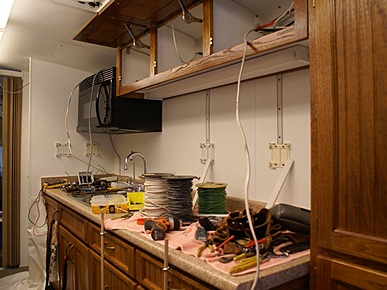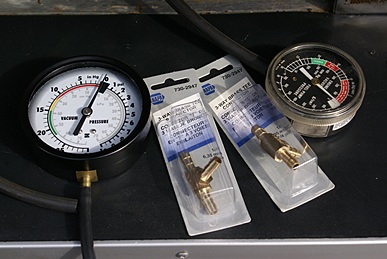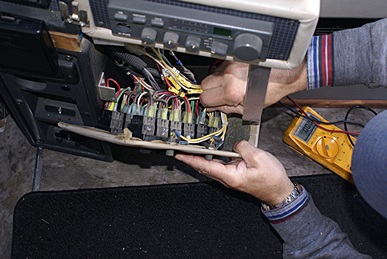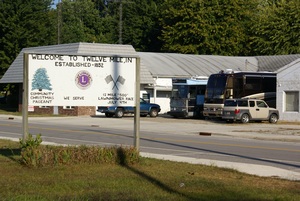2016/04/16 (S) A Local Hamfest
I heard Butch and Fonda get in their car a little before 6 AM this morning and leave for the quad-county hamfest at the fairgrounds between Peru and Mexico (in North Central Indiana, not Central America). I got up quietly at 7:30 AM, got dressed, put my camera in the car, and walked over to Small Town Brew to say “good morning” to proprietor Lisa Paul and fill my coffee thermos before driving to the hamfest. As I approached the coffee shop I sensed that something was amiss. The lights were off and something about the appearance looked different. A closer view revealed that the interior had been redone and the name Small Town Brew was nowhere to be seen. “The Branded Bean” was written on the window instead, but regardless of the name it clearly was not open for business. I walked back to my car and drove to the hamfest about 10 miles away, slightly disappointed at not starting my morning with a nice cup of coffee and a cheery chat with Lisa.
There were quite a few cars parked around the venue when I arrived. I’m not sure why, but hamfests and swap meets always seem to begin at sunrise and end by early afternoon. Perhaps it’s a certain residual military influence or because it just leaves the rest of the day open to go home and play with new found treasurers. Whatever the reason, I paid my $5 admission, got my door prize ticket, found Butch to say “good morning,” and then got some coffee. Fonda was already taking her Amateur Radio Operator General Class license examination and Butch was busy with potential buyers so I walked the aisles in search of ham radio or other treasurers I could not live without, but did not find any.
Hamfests and swap meets are mostly cash only affairs unless there are larger commercial vendors there, in which case they might take credit cards. I do not carry much cash, which is a good way to make sure I don’t spend much money buying junk I don’t need. I did find a placemat size laminated grid square map of the United States for $5 and a laminated letter size sheet with the U.S. Amateur Radio frequency allocations for $1 and bought those. Butch liked them so I went back and got a set for him too. I also found some relays mounted to substantial heat sinks. The seller had four of them for $1 each so I bought one without any specific purpose in mind. The heat sink alone was worth more than $1 and Butch bought two of them later.
I eventually sat down at Butch’s tables and chatted with him (when he wasn’t busy) while we waited for Fonda to emerge from the testing room. When she did she had a big grin on her face and we knew she had passed the test. She only missed one question out of 35, which was an excellent performance. Butch immediately got their W5YI / Gordon West General Class Study Guide and CDs out of a storage tub and put them out for sale.
Although Fonda had not studied for the Amateur Extra Class license exam she decided to take it since there was no additional testing fee beyond the $15 she had already paid to take the General Class test. I decided to stick around and keep Butch company (not that he needed me to do that) until Fonda finished the Extra exam. She got 19 items correct out of 50, not enough to pass but not bad for not having prepared, and it gave her a sense of what the test is like. She wants to get her Amateur Extra license before the end of June as a new question pool goes into effect on July 1, 2016, and is very different from the current item pool.
I spent a few minutes talking to a soldier from the Indiana Army National Guard about the Hum-V they brought to the event and then returned to our rig in Twelve Mile. I told Linda that Fonda had earned her General Class license (which Linda already has) and that Fonda was determined to get her Amateur Extra Class license by the end of June. Not that Linda typically responds to a challenge, but this seems to have rekindled her interest in doing the same.
I had not eaten breakfast so we had vegan hot dogs and fresh fruit for lunch around noon. I worked on blog posts until 1:30 PM when Butch and Fonda returned from the hamfest and I helped them unload their truck. We all sat around chatting for a while but we were all very tired and Butch/Fonda needed to eat, so we returned to our motorhome to take naps.
Butch and Fonda had not reappeared by 5 PM so Linda checked to see if they were up as we wanted to go see the progress on their “new” house in Metea. They were up so that is what we did. We were at the house for over an hour looking at the interior reconstruction and discussing the plans for what was still to be done. The house will not be ready to occupy this year and their hope/plan is to have it ready in 2017 before they leave again for the winter.
The property was seriously distressed but they got it for a good price. Besides the house, which they are gutting and rebuilding inside, there is a 40′ W x 48′ L building with a concrete floor and two 12′ W x 16′ H overhead doors. They could not build a new building like that for what they paid for the entire property. We know, because we have been trying to figure out how to put up a similar building on our property. Still, they bought themselves a big project and it is going to take some time and money to make it habitable and useable, or saleable if that is what they choose to do.
Fortunately they are now “retired” and still have the place in Twelve Mile to live as well as the converted bus. Indeed, they still have an enormous amount of work to do to get the Twelve Mile property ready to sell. It is an unusual property, having started life as a GM dealership in the 1930’s and only closing in 1981. It then housed an electrical harness manufacturing operation before Butch and Fonda acquired it more than 20 years ago. They turned the old showroom area into living quarters, retained the two bay auto service area for that use, as it has a functioning in-ground lift, and repurposed the rest of the space as a parts room, machine shop, wood shop, and warehouse for their business.
All told they have about 12,000 square feet under roof on two acres in the center of town on a state highway within very short walking distance of a bank and Post Office. All-in-all, it has served their business and personal needs quite well over the last two decades but is now much more building than they need having sold off much of their business inventory in 2014 and closed Service Motors as an active supplier of parts for Crosley automobiles. It will make an excellent building for someone, but it is going to have to be a buyer with specific and appropriate needs.
By the time we left it was 7:30 PM so we drove to the Mi Camino Real Mexican restaurant in Logansport for dinner. Linda and I split a taco salad (no meat or dairy) and an order of vegetarian fajitas (no dairy). We sat a long time after we were done eating just chatting before returning to Twelve Mile. It was 9:45 PM by the time we got back so we called it a night and went our separate ways.
Back in our rig I checked my e-mail. I had several from Gary at BCM, one of which had the first draft of the June 2016 issue. My article on servicing the Webasto DBW2010.75 Diesel Burner is in that issue and needed to be proofread and corrections noted. I made a first pass at that, replied to a couple of e-mails, and went to bed. It had been a long but satisfying day and tomorrow was the first morning since this past Tuesday that we did not have to set an alarm and/or get up early.
2016/04/17 (N) Parts Shuffle
Fonda goes to church on Sundays. She typically leaves around 9 AM and gets home between noon and 1 PM. Butch is often up very early but not necessarily ready to interact with the world except through his computer so I tend to not bother him first thing in the morning. We had a leisurely morning sitting around in our sweats (pants and shirts), enjoying our coffee, and eventually having breakfast.
When I finally got dressed and was in the humor to work, I unloaded the old tag axle caliper, old-old brake pads (not the ones I burned up), and the old torque plate, along with the new left-hand caliper rebuild kit, and moved them into Butch’s machine shop. I also moved the old/broken Shur-Flo 4048 12 VDC water pump to his shop as he wants to see if he can figure out what failed and why. With all of that stuff out of the car I repacked it to try and evenly distribute the weight of the remaining cargo.
Late morning I texted Jarel Beatty in Logansport to let him know we were here and invite him to come out and see the cabinetry he built for us last year as it was finally installed in the bus. He had a shooting competition at 1 PM at the gun club/range near Twelve Mile and said he would try to stop by afterwards.
I had finally located the 24VDC regulator yesterday and showed Butch where it was located on our bus at the outside rear corner of the storage bay over the DS drive axle. It was a very convenient location except that Royale Coach installed the slide out storage tray tight against the cover, making it impossible to remove without first removing the tray, which did not look easy to do. Butch suggested that I unplug the chassis battery maintenance chargers, connect the batteries, and leave some of the bay lights on to draw off the surface charge so we could get a more accurate reading of the battery voltage later. He also wanted to draw down the battery voltage a bit so that the alternator would have some work to do after starting the engine.
We were discussing how to deal with the failure of the regulator or alternator on the road and Butch suggested that I could always maintain the chassis battery voltage with a battery charger powered from the onboard genset. I mentioned that besides the sophisticated, but low current, maintenance chargers that I have installed the coach came with a 24V emergency charger hardwired to the chassis batteries and powered from a 120 VAC outlet in the electrical bay. The instructions for that charger, however, clearly indicate that it is for short time emergency charging to get the engine started and not for continuous use. It given its age it is clearly not an “intelligent” multi-stage charger and would boil the electrolyte if left connected for too long. Butch suggested that I remove the emergency charger and replace it with a modern, high amperage one that could be used to run the batteries and not just top them up for starting. That seemed like a good idea to me so I added it to my (mental) project list.
Butch has been redoing the solar battery charging system on their bus and had one solar panel still to install. Since it was loose he had me photograph the mounting rails he devised and attached to the long edges of the panel flanges. The photos were for a future BCM article.
Jarel showed up sometime after 3 PM. We showed him how we had installed all of the cabinetry and woodworking he had done for us based on my design drawings. He had been in the bus several times before to discuss the project, so he had a good idea of what we were trying to accomplish, but visualizing it was one thing and seeing it quite another. He really enjoyed seeing how the project turned out and took some photos with his phone to show his wife.
Linda started preparing dinner around 4:30 PM. Jarel stayed and chatted until 5 PM and then went into Butch and Fonda’s house to visit with them and their dogs, Rascal (a Jack Russell Terrier), and Daffy (some kind of wire-haired Terrier mix thing).
While Jarel was visiting I borrowed a set of jumper cables from Butch and some sandpaper. I used the sandpaper to clean the two terminals in the passenger side engine bay that are used to jump start the engine. I then attached the jumper cables in such a way that the free ends could not touch, or the positive lead short to the chassis, by clamping the ground lead to a rail in the bay and setting the positive lead on a piece of cardboard on the ground. I then clamped my VOM leads in the two jumper cable clamps so we would not have to hold them.
After Jarel left we checked the voltage on the battery bank. It was 24.95 VDC. A fully charged lead-acid battery bank at rest would be 25.2 VDC, so the voltage was reasonable given that I had the maintenance chargers off and there were some small loads on the system. Butch had me start the bus motor, let the oil pressure come up, and then shut it off. He had me start it a second time and then shut it off, and then start it a third time and leave it running, switching it to high idle. While I was doing all of that he was monitoring the voltage on the VOM.
The voltage was showing just over 28 VDC, which is what we expected from a properly adjusted, correctly operating voltage regulator. The voltage rose slightly when I switched the engine to low idle, but the batteries were probably fully charged by then and the current draw was probably minimal. In any event it did not rise above 28.5 VDC, nowhere near the 30 VDC that would trigger a “high battery voltage” warning light on the dashboard. There was also no indication of the alternator/regulator not producing adequate voltage as the “low battery voltage” warning light (the same light, actually) is triggered by a voltage below +24 VDC.
While the engine was running I made a mental note of the position of the needles on the two analog battery voltage gauges in the dashboard. The “24V” gauge was higher than the 28V mark by a full needle width, i.e., there was a needle width gap between the 28V position and the left edge of the needle. The gauge is only marked every 4 volts so it looked to me like it was reading around +29V. The “12V” gauge was sitting right on the 14V mark. The “24V” gauge should read 28 VDC and the “12V” gauge should read exactly 1/2 of that if the Vanner equalizers are working correctly.
Our simple test did not preclude intermittent problems with the alternator and/or voltage regulator that might occur after they were warmed up, and/or vibrating with the engine rotation at full RPM, and/or bouncing down the road. It also did not rule out problems with the Vanner battery monitoring system, which is what controls the warning lights on the dashboard. We also did not check the voltage at the battery bank center tap to see how closely it matched the gauge on the dashboard or how closely it was tracking 1/2 of the overall voltage as a check on the operation of the two Vanner Battery Equalizers. Still, it appeared that the alternator and regulator were functioning correctly.
Linda made black beans and rice for our dinner and Fonda made baked squash and pork chops for their meal. We also had carrots, grapes, strawberries, and pickled vegetables, including okra, to share around the table. After dinner we got out our lawn chairs and sat outside for a while, pretending we were “camping.” The air temperature dropped as the sun set and we finally put the chairs away and went inside the house to continue visiting as we had no way to make a campfire in their driveway.
By 10 PM we were all tired. I asked Butch if I could use his big auto shop air-compressor in the morning to adjust our tires and he said he would turn it on and put the hose out first thing. We returned to our coach and were fairly quickly off to bed.
2016/04/18 (M) Twelve Mile To Turkeyville
I was awake at 6 AM and finally got up at 6:30. I put on my sweats, fed the cats, and prepared our morning coffee. I noticed that Butch had already put the air hose out where I could use it so I checked/adjusted all of the tire pressures while the coffee brewed. I also turned on the TireTraker TT-400 receiver/monitor and plugged in the repeater in the PS rear closet of the bus. The outside air temperature was in the low 50’s F and all of the tire pressures were slightly below the cold pressures I like to run so I adjusted them.
After all of the tires were adjusted, and the air hose and tools were put away, I went inside the bus and used the monitor to check all of the tire pressures/temperatures and make a chart showing the actual and indicated values for each tire. All of the sensors indicated pressures higher than the ones I had just set, using a known good digital tire gauge, by 1.0 to 4.5 PSI. While this was within the specified “precision” of +/- 4% for the sensors, it was not as accurate as I think it should be.
Linda was up by this time but waited for me to have coffee and cereal (homemade granola) for breakfast at 9 AM. Today is a travel day for us, and we would not normally have coffee or breakfast on a travel day, but we were not planning on leaving until around noon for the 3-1/2 hour drive to the Camp Turkeyville RV Resort near Marshall, Michigan. We will also pass the Michigan Welcome Center / Rest Area and stop for fuel at the M-60 exit, so we will have opportunities to use facilities if needed.
After thinking about it overnight I decided that it did not make any sense for us to take the three new/rebuilt brake calipers home to Michigan only to have to haul them back to Indiana in a few weeks to have our mobile mechanic, Joe Cannarozzi, install them. I borrowed one of Butch and Fonda’s hand trucks and move them from the car to the machine shop one at a time. I then repacked the back of the car, which was now 300 to 350 pounds lighter than when we arrived in Twelve Mile.
Sometime between 9 and 10 AM I called Camp Turkeyville to make a reservation for today. Angela was not in the office but a woman took our name and request. The park was far from full and the reservation not really necessary, but we wanted to make sure we got a full-hookup pull-through site. We visited for a while with Butch and Fonda before making our final departure preparations. By 11:30 AM we were ready for the final steps in the departure process. Linda moved the car from in front of the bus and battened down the inside of the bus while I got the shorepower disconnected. I started the motor, let the chassis air up, and pulled it straight across the street into the grain elevator driveway where Linda pulled the car up behind it. With the car connected and prepared for towing I restarted the bus engine and we did our light check. Butch and Fonda walked over for one last, quick conversation and then it was time to go. They never chat with us while we are hooking up as they know it can create a dangerous distraction.
We knew the exact route we planned to follow but entered the destination into the Rand-McNally GPS anyway. Ever since I did the update at Florida Grande Motor Coach Resort the unit has been very sluggish in its response to screen taps but appears to still work.
I looped around through the grain elevator driveway back to IN-16 and headed east out of town. At US-31 we headed north. The GPS unit kept trying to get me to head east on county roads but I stayed on US-31 all the way to US-20. At US-20 we headed east and stayed with that route all the way to I-69 in spite of the GPS unit’s repeated attempts to get me to turn north and head up into Michigan, presumably to pick up US-12. At I-69 we headed north and soon enough we were back in our home state, the first time since November 27th last year.
About 12 miles into Michigan we stopped at the Welcome Center / Rest Area briefly and then continued or trip. We exited again at Tekonsha / M-60 (exit 36?) and stopped at the Travel America for fuel. The pump would not accept our Chase VISA card and we assumed that Chase Bank, ever vigilant with regards to its use as we cross state borders, had rejected it. It turned out that the truck pumps were only set up to accept corporate/fleet cards so Linda had to go inside anyway and used one of our other cards to pay for the fuel. All of this caused a bit of a delay but I eventually put 50 gallons in the tank. I did not fill it because I did not want to put in the additives at this fuel stop. I wanted to do that at the Mobil Truck Stop near our house and top it up just before getting home.
On our way once again we exited I-69 at N Drive North and a half mile to the west pulled into the entrance to Camp Turkeyville. It was just before 4 PM and Angela was in the office and expecting us. The site she planned to put us on had a car parked in it, without the owner around, so she moved us to a different one a few sites down. It was a difference without a distinction and was an easy in, easy out, relatively level pull-through full-hookup site, which was all we cared about. I adjusted the level and then shut off the motor. The only hookup we needed for the rest of the day and evening was electricity so I took care of that and shut off the chassis batteries and air supply for the engine accessories.
Since we would only be here for one night we did not set up the interior the way we would if we were sticking around for even a few days. We were parked facing south and the afternoon sun was bright and warm so I put out the awnings on the passenger side of the coach. Gary, a fellow camper from a few sites down, stopped to chat and compliment us on our motorcoach. After we wrapped up our chat we went inside and had an easy dinner.
One of our routines (traditions, rituals?) is to walk an RV park when we arrive unless the weather is very disagreeable. The weather was near perfect this afternoon, and it was still plenty light at 7 PM, so we walked over to the Cornwall’s Turkeyville building to see if it was still open. The building houses a restaurant, ice cream parlor, and general store. They were open until 8 PM so we meandered through the store but did not buy anything as neither of us brought our wallets. We strolled back to the campground and walked the outer loop before returning to our coach.
We had access to quite a few OTA TV signals and tuned in one of the CBS affiliates with a strong signal. We watched our usual Monday evening TV programs and turned in for the night without setting an alarm.
2016/04/19 (T) Home Again
With the overnight low outside air temperature forecast to be in the upper 40’s we left the bathroom roof vent and bedroom windows open as we knew the outside conditions would make for wonderful sleeping conditions inside the coach. We were tired, and did not have to be up at any particular time, all of which made for good sleeping snuggled under a thin blanket. I got up at 8 AM, tended to the cats’ needs, and made 7 cups of coffee. A little after 9 AM we had toast and preserves for breakfast. We don’t usually have breakfast and coffee on a travel day, but today was the final leg of our winter 2015-16 snowbird season, and the trip from Camp Turkeyville to our home was only 80 miles, with rest stop opportunities along the way if needed.
Checkout time at Camp Turkeyville RV Resort is noon and our target was to pull out between 11:30 AM and noon. Part of the reason for stopping here for one night before going home was to empty our waste tanks. Another reason was to give us a short, easy drive at a time of day that avoided the rush hour traffic at the beginning and end of the work day. This was the third year in a row that we have done this and it works very well.
We started tending to our departure tasks around 10 AM and would have been ready to go by 11 AM except for a very nice, but very talkative, neighbor. Still, we were on schedule and not in any particular hurry. We pulled out of our site at 11:30 AM and made the long, slow trip around the outer road of the campground to get back to the exit. Once we were on I-69 N I set the cruise control at 63 MPH and let the bus roll. I-69 between I-94 and I-96 is a concrete road made of small, discrete slabs, and you feel every joint between them. But hey, it’s Michigan; we expect the roads to be in bad shape and we like it that way (not). Well, apparently the majority of our fellow citizens like it that way, OR at least prefer it to paying taxes and enforcing weight limits and speeds. If that wasn’t the case, our elected officials would do something about it.
There was rain headed our way but it was not expected until tomorrow or later. Still, the sky was overcast and we had not traveled very far up I-69 when we started getting a light, intermittent drizzle. It stayed with us all the way to Lansing where we picked up I-96 E. By the time we got to exit 122 (M-52), where we stopped at the Mobil Truck Stop for fuel, we had driven out from under the rain.
Since the bus would be sitting for at least a couple of weeks I added Stanadyne Performance and Lubricity Formulas, and Racor Biocide before filling the tank. It’s always better to have fresh diesel fuel but it is also good to store the bus with a full tank to prevent condensation from moist air in the tank. My solution has been to use the Biocide and store the bus with a full tank. If it is going to sit for any length of time I run the Parker Fuel Polishing Module to slowly filter it and remove residual moisture.
From the Mobil Truck Stop it was only 11 miles to exit 133 (M-59), another 10 miles to Hacker Road, and about 2-1/2 miles (on dirt roads) to our house. This stretch of Hacker is scheduled for paving this year and we knew from the Livingston County Road Commission that work had already begun. Indeed, the surveyors were working in the fall before we left for Florida.
The initial work this spring was the removal of trees along both sides of the road and as soon as we turned off of M-59 onto Hacker it was immediately obvious that this had occurred. It was also obvious that the road had been very recently graded and that there had not been any rain since then. We still took our time, keeping our speed to about 25 MPH, but it was one of the smoothest trips we have ever had in the bus along this stretch of Hacker. To our delight, the grader had also obviously done our street recently and we noticed that a few of our neighbor’s had apparently trimmed or removed a lot of trees and bushes near the road. Yeah!
As we got to the first of our three driveway entrances I stopped the coach and lifted the tag axle while Linda got out. She always spots for clearance to obstructions and guides me into the final parking position. There were a few larger tree limbs in the driveway so she picked those up before I pulled in. Once I was positioned on the level parking pad area of the driveway I put the tag axle down. The coach was close enough to level that I did not bother adjusting the suspension. After letting it idle for a couple of minutes I shut off the motor and we started our arrival routine with one notable difference; Linda’s first task was to get the cats in their carriers, unlock the house, take them inside, and let them out of their carriers. Coming home us a big deal for them, too.
I turned off the engine accessories air supply and the chassis batteries and connected the shorepower cord. The circuit breaker for this electrical service is in the sub-panel in my office. I turned on the wrong breaker the first time so it took a second trip to the basement of the house to get power to the coach. We had no intention of unloading everything today but there were a few things we wanted to get into the house right away, such as wallets and keys. At the top of my list was all of our computer, networking, and photography technology while Linda’s focus was on clothing and food.
Once we had our highest priority items moved into the house I texted the small circle of friends who we have been keeping in touch with about Linda’s illness and our bus problems to let them know we were home safe and sound with no further problems. I then went to the garage, found our good battery charger, and connected it to the 12V starting battery in the Honda Civic Hybrid. Brendan had told us a week or so ago that the battery was dead and when I connected the charger it would only accept about 2.5 Amps of current and quickly tapered off to less than one Amp. That wasn’t much current for a depleted battery but I left it and went back into the house.
I checked a little while later and the charger had given up and displayed an “F01” error code. I did not even bother looking it up as the car is a 2007 model and this was probably the original battery. I decided to go ahead and get a new battery from O’Reilly’s in Howell, but first we had to unhook the Honda Element from the bus. The car was filthy, having been towed at least 1,500 miles since it was last washed, but I stopped and got the new battery first and then went to the car wash just down the street on the same side of Grand River Avenue. I then went to the Meijer’s supermarket at Grand River Avenue and Latson Road and picked up a few things.
Linda started preparing dinner at 5:30 PM and was just about to put the pizza in the oven when Butch called. We chatted for about 15 minutes and he updated me on the removal of the radiator blowers and T-drive from their MCI MC-9 NJT bus. This assembly is above the engine and almost the width of the bus but they were able to get it out using their forklift. (It really is nice to have the right tools for the job.) Butch noticed last weekend that a lot of the oil had leaked out of the T-drive and figured it needed new shaft seals, at a minimum, and might need new bearings. With the assembly out of the bus Butch can conveniently do all of the needed work on a bench and repair/rebuild some other things while he is at it.
Our first dinner course was a nice salad with arugula and Italian kale. The pizza was one of our favorites, an Amy’s Roasted Vegetables with Caramelized Onions. By the time we were done eating it was almost time for our Tuesday evening CBS TV shows and I decided to replace the car battery tomorrow morning. I did, however, move the NAS and my computer to my office and connect them to power and the Netgear switch. To my great relief, the network interfaces on both devices still worked just fine. Clearly, the Amped|Wireles SR20000G wired network ports had failed although I still do not know why and probably never will.
The 2015-16 TV season is coming to an end so the season finales are now airing and they are all cliffhangers, of course. We went to bed at 11 PM, watched a rerun of Two and a Half Men, and a few minutes of The Late Show with Stephen Colbert before going to sleep.
2016/04/20 (W) Core Return
We love our bus, love being in the bus, and love the lifestyle the bus affords us. But we are not true gypsies at heart, and we also love our house and property. We like the anticipation of travel and the promise of new experiences, but we also like the comfort and stability of finally landing at home after a long voyage.
We slept in this morning and finally got up at 8 AM. Some things are the same regardless of whether we are at home or in the bus, and morning coffee is one of them. We were enjoying our morning brew when our son texted Linda to see if we were available to FaceTime. Of course we were! A short time later we were “face-to-face” with grand-daughter Madeline (and her parents).
Another constant is Linda’s homemade granola. She managed to make enough of it, and/or we managed to limit our consumption of it sufficiently over the winter, that we still had some left for breakfast this morning. We might have one or two more servings beyond today, but she will be shopping for ingredients and making a new batch very soon. She will also be making sure we have the necessary ingredients on hand to make vegan pancakes and vegan cupcakes as we anticipate an overnight visit with Madeline in the very near future.
After breakfast we got dressed and got to work. Linda called Alchin’s to restart our weekly trash pickup while I made a service appointment for the Honda Element. We checked our home phone messages. Only a handful of the 42 messages contained any actionable information. I made note of those details and then deleted all of them. I called Catamaran Home Delivery and ordered refills for two prescriptions. I then called Keith at Kish Lawn Care to see when he was planning on starting our mowing this season. Keith’s wife just had major surgery, and the grass has not grown much yet this spring, so the first cutting is probably still a couple of weeks away.
With our calls taken care of we turned our attention to replacing the 12V battery in Linda’s Honda Civic Hybrid. The nuts on the two threaded hold down rods were badly rusted and did not want to come loose so I sprayed them with WD-40 and let them sit for a while. I eventually got the nuts broken loose and backed off enough to remove the rods, but bent the retaining brackets in the process. I put the rods in my bench vise, and finished removing the nuts. We removed the old battery, transferred the anti-corrosion pads to the new battery, set it in place, and reinstalled the protective plastic 2-piece cover. We connected the vehicle cables and then connected the good battery charger to it to bring it to full charge before trying to start the car.
Back in the house Linda unloaded containers of water from the house refrigerator and then wiped it out. She then unloaded a few more things from the bus, including clothes and food. I texted Jim and Kristine Gullen to let them know we were back and then started researching small tractors and mobile Wi-Fi devices. Linda was getting ready to order an Instant Pot and a couple of 12VDC power adapters for our Rand-McNally GPS unit through Amazon and I suggested she look for the Burton portable induction cooker that we saw at Butch and Fonda’s place. The Suntunpen unit we have now works fine but the Burton unit has two advantages over it; a completely flat/smooth top and higher maximum power setting. She found it, added it to the cart, and placed the order.
Linda heated a can of Amy’s vegetable soup and we split it for lunch. I checked the battery charger and it said the battery was full so I put the old battery on the back seat floor and had Linda start the car. It started on the second try and she backed it out of the garage so I could get in. The hybrid battery was depleted and there was a red battery symbol illuminated on the instrument panel that we had never seen before so we got the Owner’s Manual out and looked it up. It either meant that the 12V battery was not charging or that the hybrid battery was drained below some threshold, or possibly both. We could see the charge level coming up on the hybrid battery so we waited and the battery warning light eventually turned off. Linda also noticed that the in-dash navigation system, having completely lost power, was requesting a security code to reactivity it. I found the code on a sticker inside the glove box and after Linda entered it the system returned to normal operation. When the hybrid battery charge indicator was above 50% she backed out of the driveway and we went on our errand run.
I was on Golf Club Road last night when I went to O’Reilly’s to get the new battery so I knew it was in rougher shape than usual. We took Hacker Road south instead which kept us on pavement. We headed back west on Grand River Avenue to O’Reilly’s to return the old battery and get the core charge refund. We then drove back east a short way to the drive-through car wash. Linda had not used it before and was unclear about its location. With the car all cleaned off we headed west again to Teeko’s Coffee and Tea to order some fresh roasted coffee beans. Jeff was there and roasted the beans while waited and enjoyed a cup of Sumatra Manhelding coffee. We got our usual Ethiopian Yirgacheffe half-caffe blend and decided to try a Costa Rican Terrazzu half-caffe blend.
We took the long way home, going back east on Grand River Avenue and then north on Hacker. The extra driving around gave the hybrid battery plenty of time to recharge and cycle up and down and kept our just-cleaned car mostly on paved roads.
Back at the house I backed my car up to the large garage door and unloaded everything inside in preparation for my 10 AM service appointment tomorrow at Brighton Honda. While I did that Linda unloaded a few more things from the bus. We had quite a few rocks on the concrete driveway, as a result of Kerry Fear plowing snow this past winter, so I swept them off with a push broom. We also had 6″ high ‘curbs’ at our three driveway entrances as a result of recent road grading, so I graded them out using a metal toothed rake.
By the time we finished those tasks we were ready to be done with physical work for the day. Linda decided to spend an hour or so studying the item pool for the ham radio Amateur Extra class license exam. I gathered up the laundry, took it to the laundry room, sorted it, and started a load. I then joined her on the back deck to work on blog posts for a while. By 4:30 PM it was a little chilly and we went inside. I took up my usual spot on one of the living room sofas and almost immediately Juniper (our female cat) was in my lap.
For dinner Linda made a nice salad with arugula, Italian kale, strawberries, and slivered almonds. The main course was pan-seared tofu with caramelized onions and barbecue sauce, served with a side of corn kernels. Yum. After dinner Linda wanted to go for a walk so we patrolled our street from one end to the other, which took about an hour.
Wednesday night is usually PBS night for TV but neither of us were in a TV watching mood. I went to my office for a while, checked in to RVillage, and changed our location. I then went to the WiFi Ranger website, downloaded some manuals, and opened a support ticket. Back upstairs I texted Joe Cannarozzi, our mobile mechanic, to arrange a time to call him and discuss brake work. I then called Mike (W8XH) to catch up on ham radio and SLAARC stuff and check on borrowing his trailer to transport our non-functional Cub Cadet Lawn tractor to Sloan’s for repair. By the time I wrapped up my conversation with Mike, Linda had gone to bed and was watching a program on PBS about a previous live broadcast from the Monterey Bay Marine Sanctuary called The Best of Big Blue Live. Linda fell asleep but I stayed up long enough to watch a rerun of Two and a Half Men and the first half hour of The Late Show with Stephen Colbert while working on this post. With the stroke of midnight came sleep.
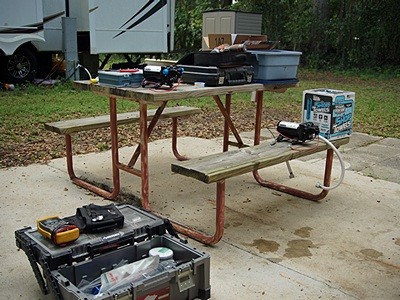


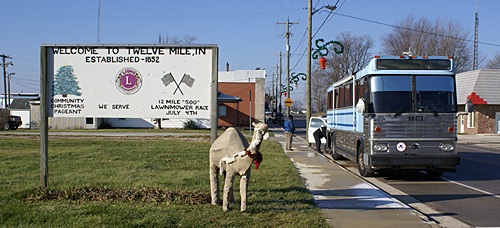
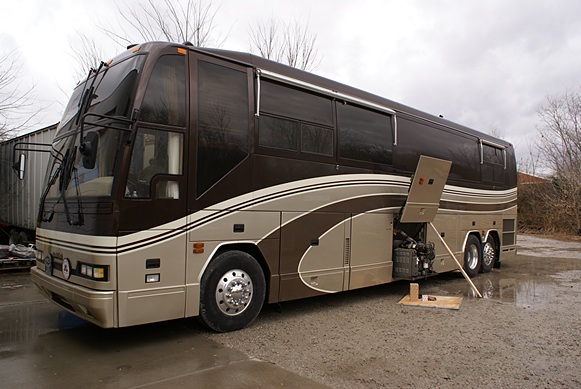
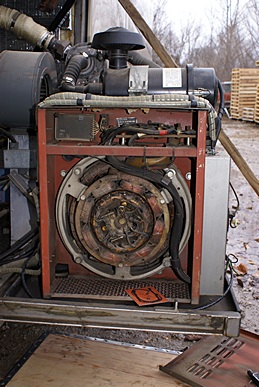
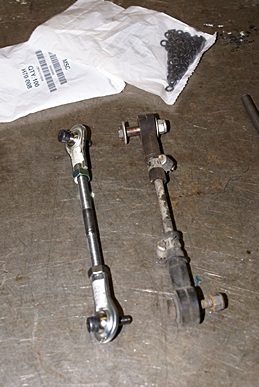
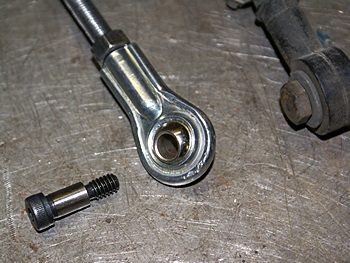
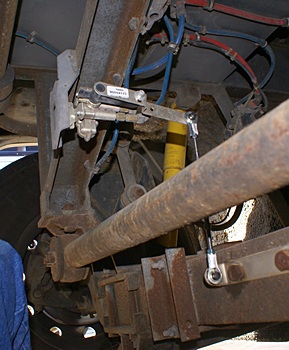
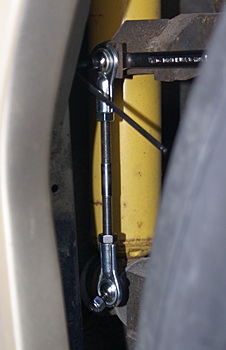
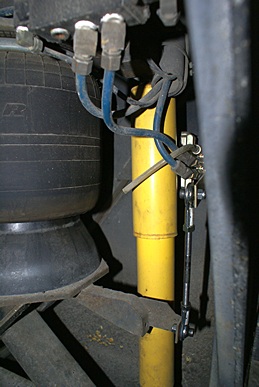
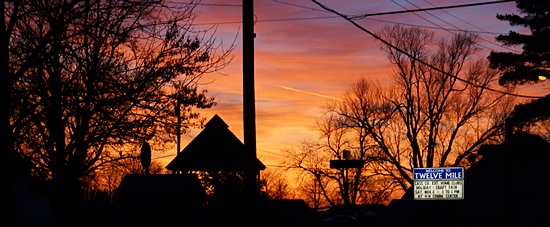
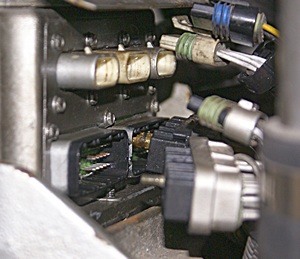
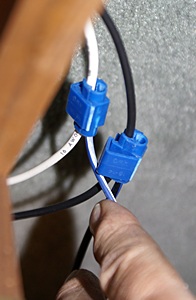
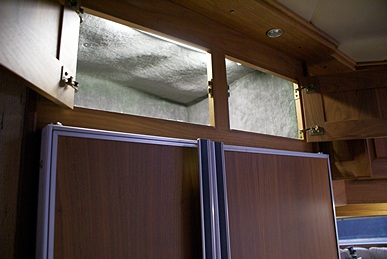
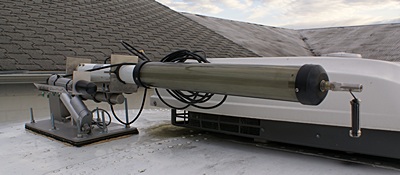
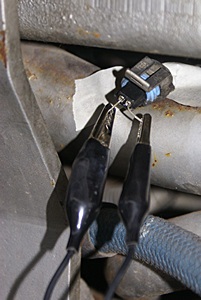
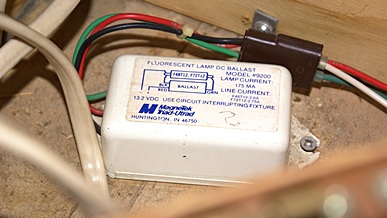
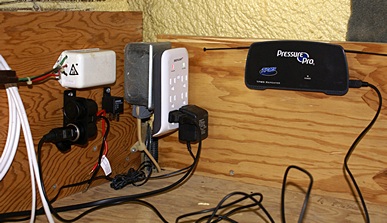
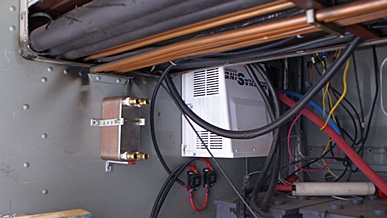
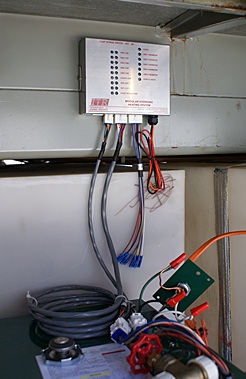
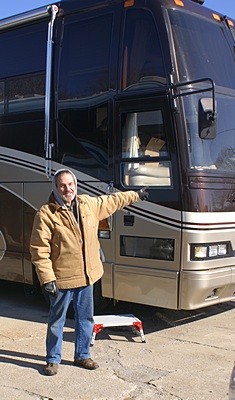
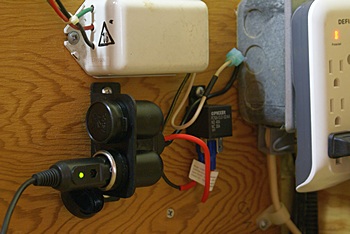
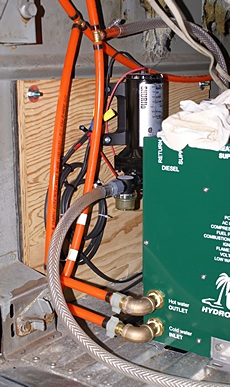
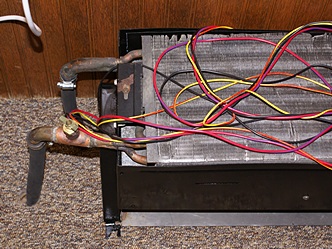
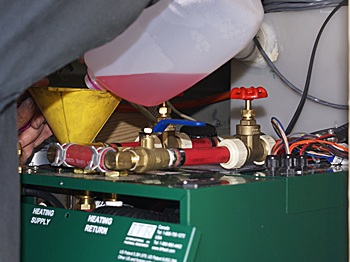
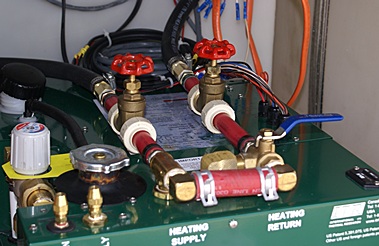
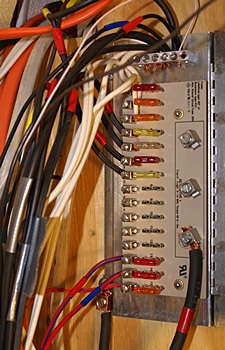

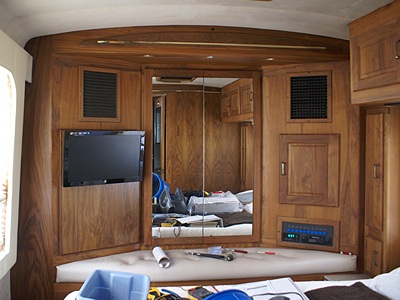
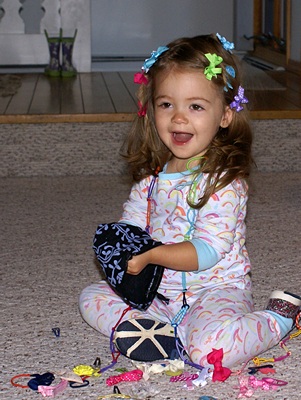
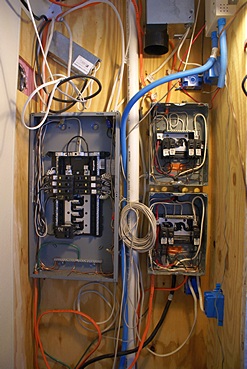
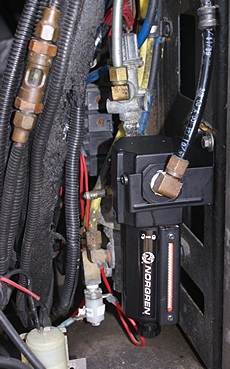
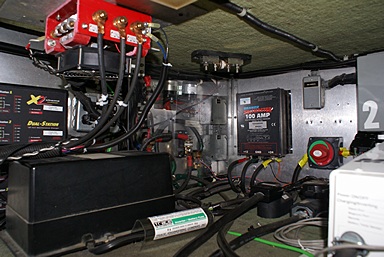
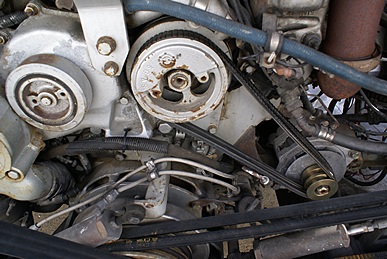
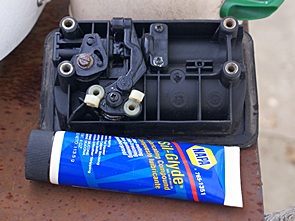
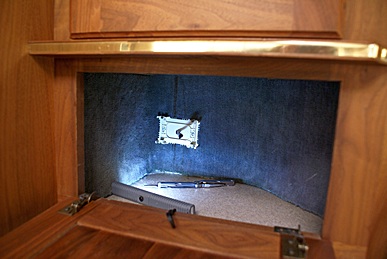
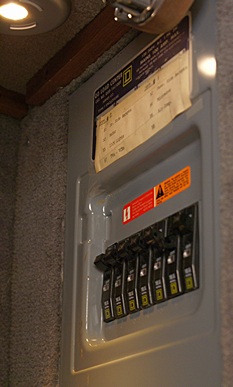
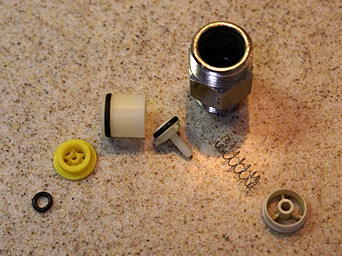
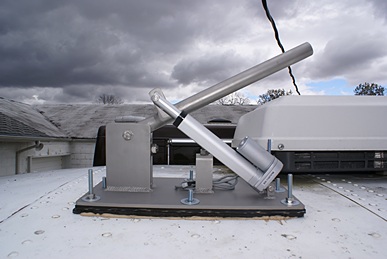
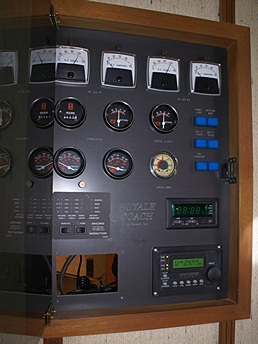
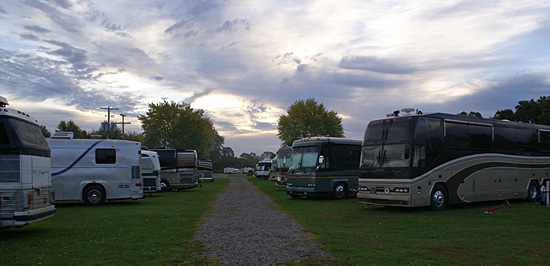
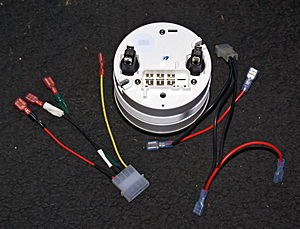
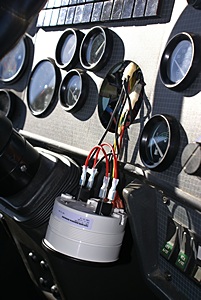
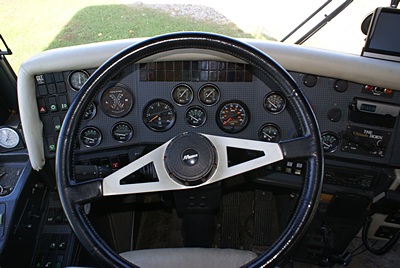
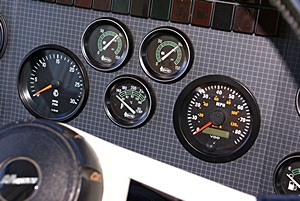
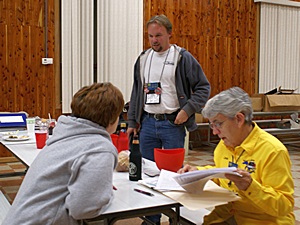
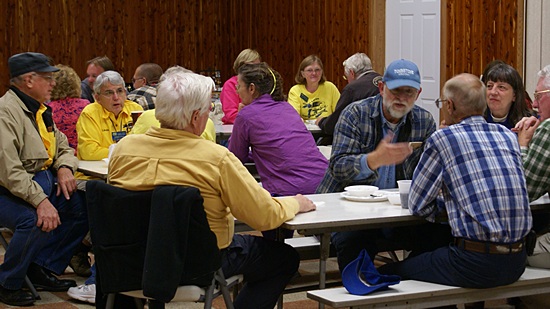
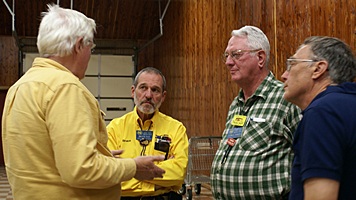
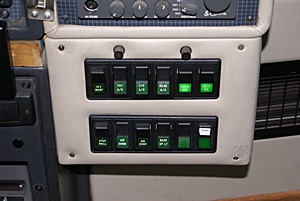
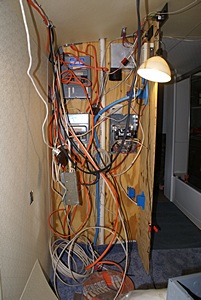
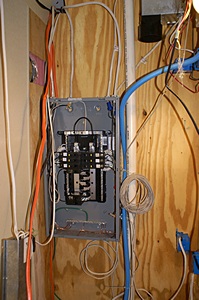
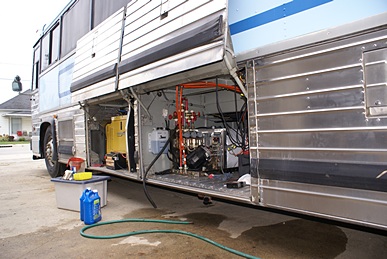
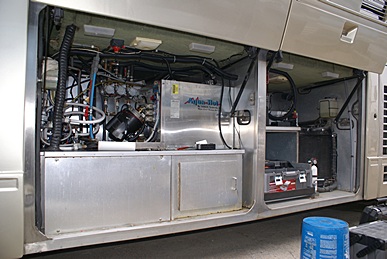
 Our last stop was at Aldi’s where Butch picked up some things they needed for their dinner tonight.
Our last stop was at Aldi’s where Butch picked up some things they needed for their dinner tonight.